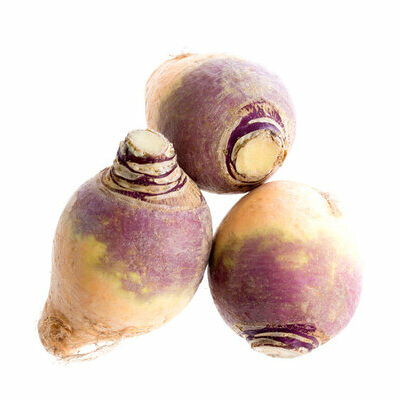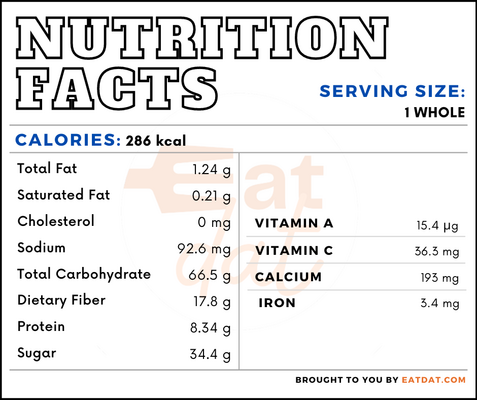
Rutabaga
also known as Swede
What is a Rutabaga?
Rutabaga is a root vegetable, and a member of the Brassica napus family of plants which includes certain varieties of kale. The word comes from the Swedish word rotabagge, meaning rutabaga, but which literally translates to ‘baggy root’. It is similar to the turnip, and is colloquially known as the yellow turnip.
- This vegetable has a lumpy and irregular shape, similar to a spinning top, with a dull yellow skin with purple band at the crown.
- When cooked, it turns into a mustard yellow.
The root has a mild flavor with hints of sweetness. These vegetables are popular in Scandinavian, Eastern European, and Australian cuisines.
Some popular ways use rutabaga in the kitchen are:
- Mashed
- Vegetable Noodles
- Gratin
- Hassleback
- Cake
- Fries
- Soup
- Salad
- Roasted
Origin of rutabaga
This vegetable is a hybrid between turnip and wild cabbage. They most likely originated in Scandinavia or Russia, in the 1600s. The first mention of the root is in the 1623 Pinax Theatri Botanici, a botanical thesaurus by Swiss botanist, Gaspard Bauhin. Additionally, he was the first person to domesticate the vegetable, as it was only growing wild until then.
Nutrition
Nutritional profile for rutabaga (1 large, raw):

This root vegetable is rich in calcium, magnesium, phosphorus, potassium, vitamin C, folate, choline, lycopene, and lutein + zeaxanthin. Additionally, it contains sodium, selenium, niacin, carotene, and vitamins A, E, and K. Also, it has a significant antioxidant capacity, which may help in preventing cancer. Regular consumption may also help in preventing cardiovascular diseases, diabetes, and obesity, while maintaining a healthy gut, nervous system, and immune system. Also, it helps keep the skin healthy.
Commercial production
Rutabaga is a winter plant and can actually thrive in frost. This root vegetable is one of the few crops that taste better if harvested after a frost. They grow best in ordinary, well-drained soil, and must be supplemented with boron. They are harvested when the roots begin pushing up from the soil. If packed in sealed bags and stored in a cool place, they can remain fresh for up to 4 months.
Rutabaga recipes
Swede is a hearty root vegetable that is suitable for preparing salads, stews, and soups. Also, it may be cooked and made into stuffing in different dishes. For the most part, this vegetable can be used much the same way you might use a potato. Here are a few recipes to try:
- Rotmos
- Lanttulaatikko
- Lapskaus
- Kålrabi Salat med Epler
- Cornish Pasty
- Smalahove
- Brennsnut
- Irish Stew
- Pinnekjøtt
- Rösti
- Lagman
- Borscht
- Chicken Stew
- Garden Veggie Chowder
- Cream of Rutabaga Soup
- Canapés
- Croquettes
- Laksa
FDA regulations
The FDA classifies this vegetable under the generally recognized as safe category. Canned rutabaga is defined as the root of the rutabaga plant and may be canned whole, quartered, sliced, or diced. The grades and standards for the root are given by the USDA.
References
Pasko, Pawel et al. “Rutabaga (Brassica napus L. var. napobrassica) seeds, roots, and sprouts: a novel kind of food with antioxidant properties and proapoptotic potential in Hep G2 hepatoma cell line.” Journal of medicinal food vol. 16,8 (2013): 749-59. doi:10.1089/jmf.2012.0250, https://pubmed.ncbi.nlm.nih.gov/23957358/
Helen Rosner, What Rutabaga Does Better than Anything Else, The New Yorker, https://www.newyorker.com/culture/kitchen-notes/what-rutabaga-does-better-than-anyone-else
Rutabagas, The Old Farmer’s Almanac, https://www.almanac.com/plant/rutabagas
